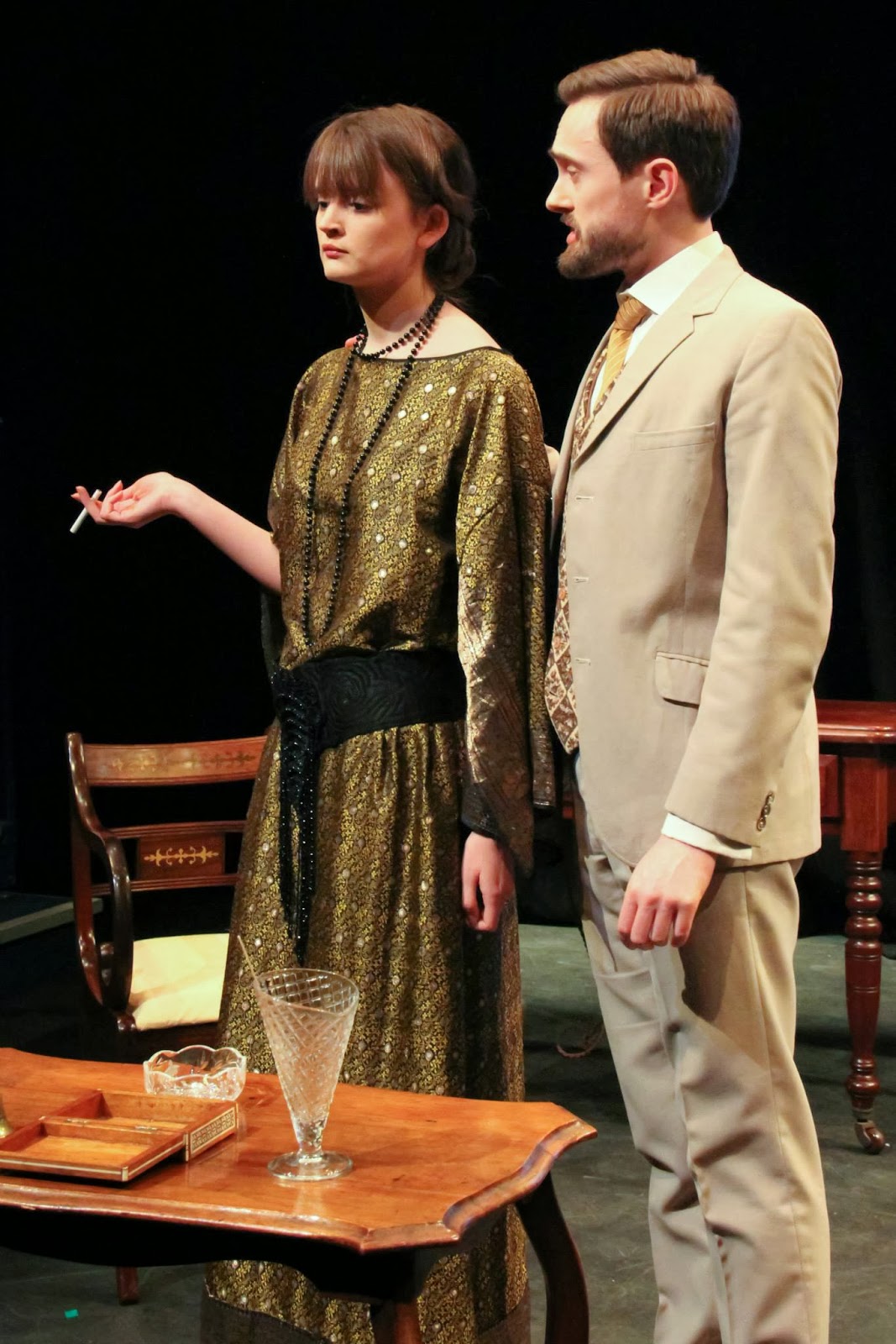The Stepmother
Putting Githa back on stage… through York Community Settlement
Players and York Theatre Royal,
‘In the character of Lois Relph, Gina Sowerby
has created a truly modern woman, juggling the demands of children, business
and conscience at a time when the pace of social and technological change is
fast and getting faster.’
As a costume design student, I was delighted to be
part of this truly powerful production. I worked along side a couple of lovely costumiers for the project. When sourcing costumes, there are a lot
of factors to consider, the budget, script, character analysis, the era,
budget, time etc. Typically when involved in a project I follow a guide- 'research,
design development, final outcome'
Research
To begin, I was sent the costume chart, script, measurements and a brief description of each of the characters. The stepmother costumes needed to resemble the
1920-25 era, so loose fitting dresses, low waists, sashes, finger waves,
tailored jackets are things we wanted to include. Through collecting
imagery and gathering information on the era (using pinterest and looking at
old photographs of our grandmothers and great grandmothers) we strengthened our
ideas of what costumes we needed to fit in with that era.
 |
| Mood board - Lois |
Another thing to take into account was the script. There are usually parts in the script that affect the costumes. For example,
‘Lois. My dear child, what have you got there?
Betty. Where?
Lois. On your frock.
Betty. Flowers.
Lois. Please take them off. AT once.
Betty. No, Mother…
Lois. Yes, Mother. Who made that frock?
Betty. You did, of course.
Lois. Ginevra’s did. And if you think Ginevra’s is
going to send you to a dance with one and eleven pence worth of paper flowers
on your dear little waist, you’re mistaken.’
Consequently Betty's dress needed to be plain, for her to want to dress it up.
 |
| Initial design for Betty |
After considering all the necessary
attributes for the costumes, we designed and jotted down ideas for
clothing. Weather it was reconstructing an old shirt and adding frills to
embellish it, or creating patterns and making the costume from scratch, we needed to decide ‘how’ the design is turned into reality. Taking into account the budget we assigned money to each character, how much we were permitted to spend to make the
costumes. Taking measurements, shopping for trims and fabrics, making and
altering patterns, doing up toils, searching for shoes and traveling to costume
hires to use what’s available are all the things we did during the development
stage.
By searching the 1920's section of the West Yorkshire Playhouse costume hire, and Theatre Royal costume hire we got a better idea of what we would need to make: whole outfits, dresses, skirts, embellishments, reconstruction of old garments etc.
Development Process
 |
| Shopping for costumes at the WYP |
 |
| Pattern Cutting |
 |
| Making Toiles |
 |
| Making Lois's evening gown |
 |
The fitting of
Betty's dress |
Final outcome
The Stepmother
by Michael J Oakes
Ask me why I love costume design? Costumes pull the whole project together, everything is complete, the actors know their lines, the set is complete, the tickets are sold, but once the costumes are on, it becomes real.


























































